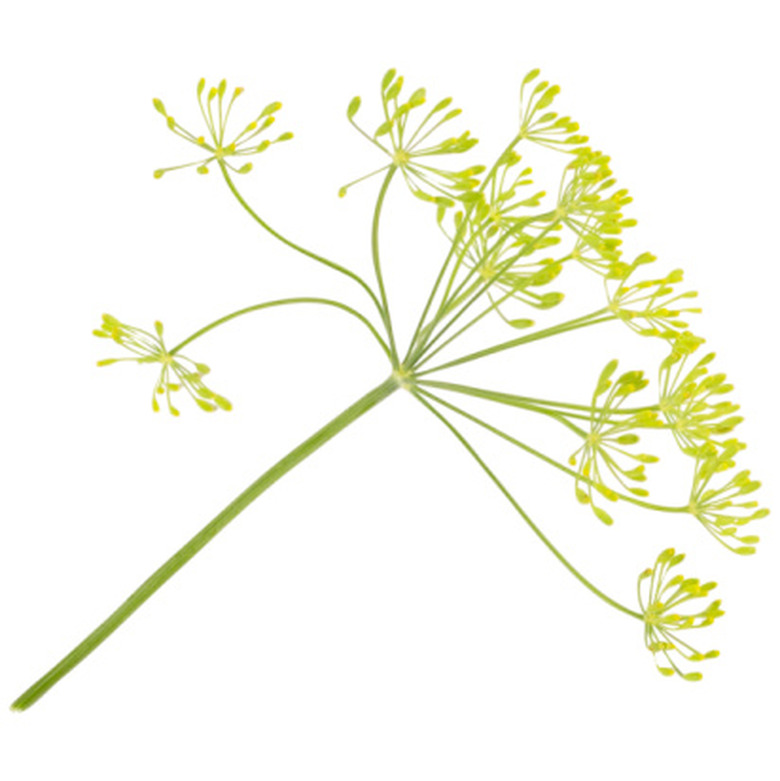My Dill Plant Is Drooping
Dill is one of the easiest garden herbs to grow. A drooping plant rarely indicates disease, but rather improper growing conditions or even a normal part of the plant's life cycle. Remedy both problems by planting dill seed throughout the summer. Use the tangy leaves and flowers in salads, pickles, sauces and potato and fish dishes.
Sunlight and Water
Sunlight and Water
Plant dill in full sun for best growth. In partial shade, the plant may grow slowly, produce yellow leaves or droop. Keep the soil evenly moist after planting to hasten germination. Once the seeds start growing, dill thrives in somewhat dry soil. Wet soil encourages powdery mildew, which causes a white growth or drooping. Excessive water also dilutes the volatile oils in dill, reducing its flavor and aroma.
Soil and Nutrients
Soil and Nutrients
Dill grows best in light, well-drained, slightly acidic soil. Amend soil with compost or manure before planting dill seeds. Fertilize dill with one application of 5-10-5 fertilizer during the summer. Too much fertilizer encourages soft growth, which can cause the plant to droop.
Form and Life Cycle
Form and Life Cycle
Dill grows on tall stalks that when left untended may droop. Plant dill in an area protected from high winds so the plants aren't knocked over. Pinch the plants back every few weeks to encourage compact, bushy growth instead of drooping. Remove the flowers and use them for best flavor. Once the plant flowers, its life span is over and it will begin to decline.
Considerations
Considerations
Dill plants have a life span of about six weeks from planting time to harvest. Sow the seeds continuously for a fresh supply of dill all summer long. Although dill seeds tolerate cold weather and may self-sow the following spring, dill plants are tender annuals, killed by the first fall frosts. After a cold snap, dill droops or turns black.
References
- University of Minnesota Extension; Dill; Jill MacKenzie; 2007
- Utah State University Extension; Dill in the Garden; Adam Oakley, et al.; 2009
- "The Herb Identifier"; Andi Clevely; 1999
